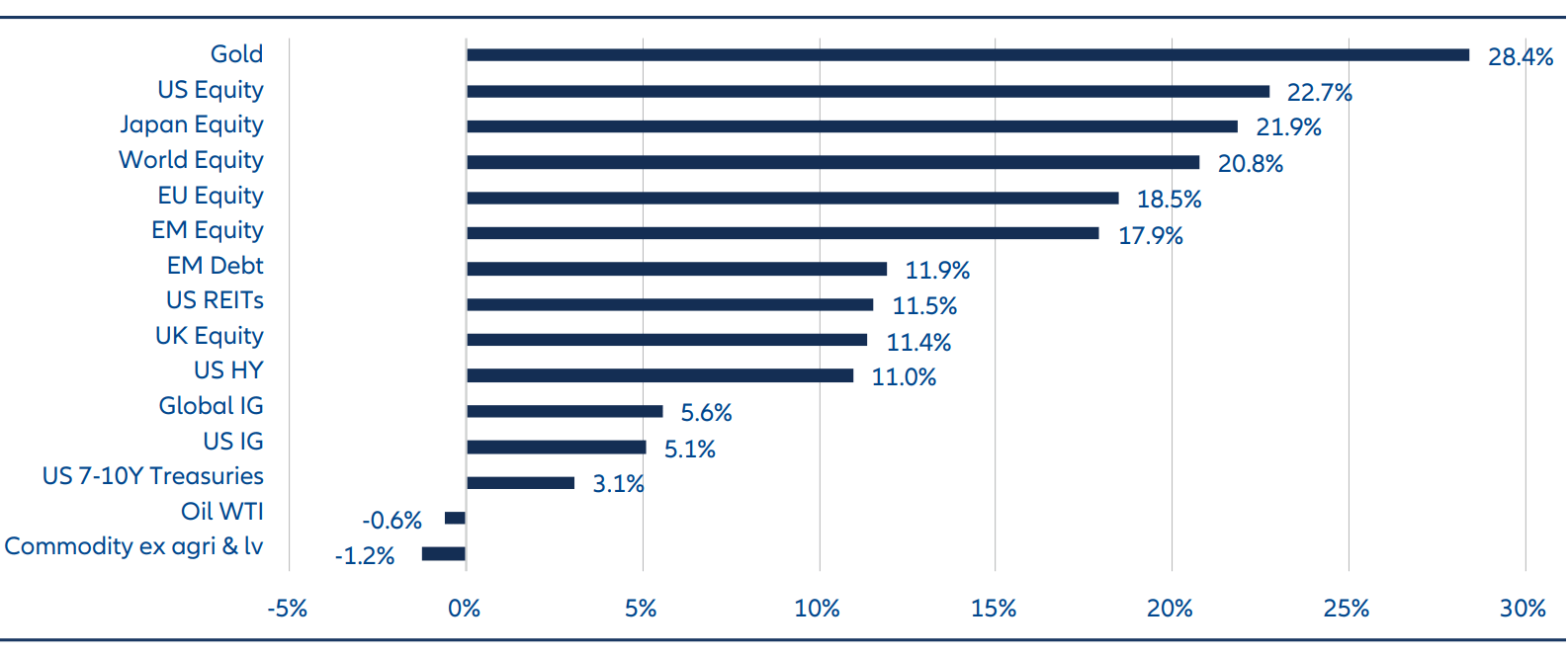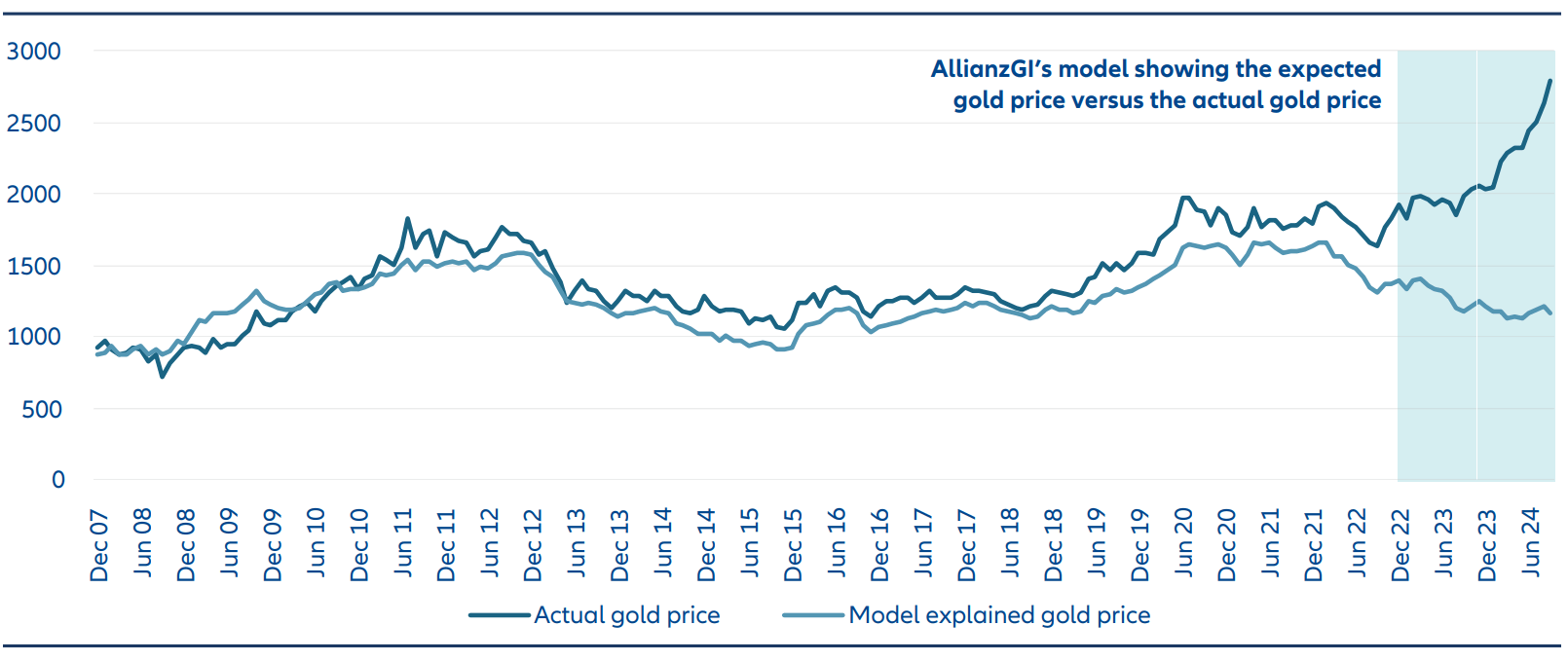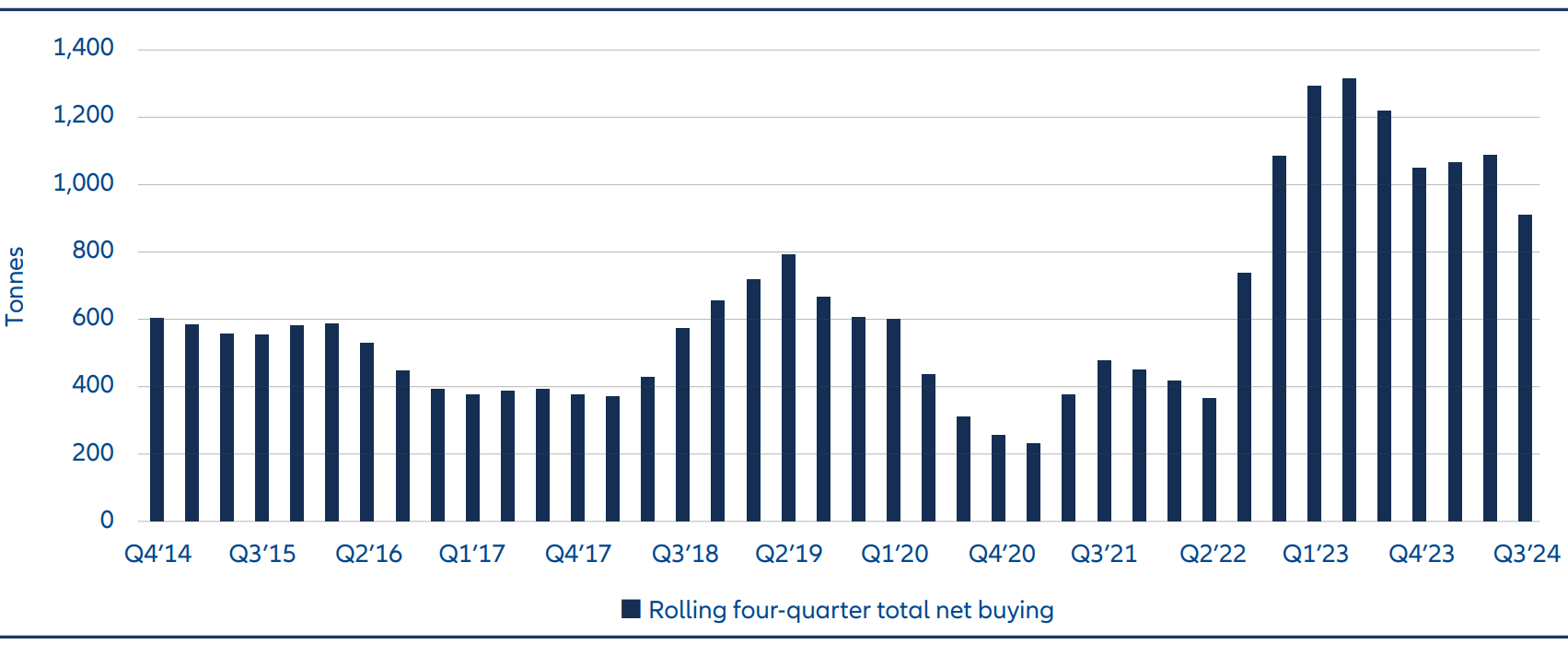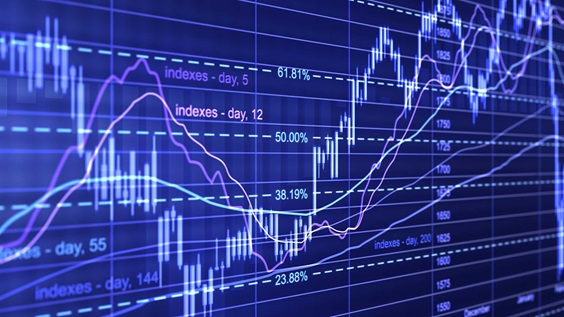Navigating Rates
Gold: a glittering future?

The dynamics of the gold market are changing. The factors that have historically supported the yellow metal are fading as a new set of influences emerges. What hasn’t changed, in our view, is the strategic value that gold can bring to portfolios.
Key takeaways
- After a stellar two years, gold has strengthened its position as an essential tool for portfolio diversification and risk management.
- Three factors have shaped gold’s performance in the modern investment era: US dollar weakness, low real yields and greater retail investor demand.
- But we think a new set of influencers are emerging to shape gold’s performance: persistent geopolitical tensions, rising fiscal deficits and sovereign debt concerns.
Gold has outshone other major asset classes over the past two years, with the yellow metal a standout performer even compared to the consistently strong US equities (see Exhibit 1).
Traditionally viewed as a safe-haven asset, gold’s performance may be surprising given the kind of macroeconomic backdrop that is not typically conducive to strong returns for the asset class. Historically, robust economic conditions and the months before and after US presidential elections have benefited riskier assets such as equities and energy prices.
But the gold price has still appreciated significantly since the fourth quarter of 2022.
So, what factors have driven its upward path? We think three forces have shaped gold’s performance in the modern investment era – although a different set of dynamics may be in play going forward.
Exhibit 1: Gold has outshone other asset classes in the past two years

Source: Allianz Global Investors, Bloomberg for the period between 28 October 2022 and 31 October 2024. The tickers used are: LEGATRUH Index, TUKXG Index, BCOMCLTR Index, BCOMXALT Index, SX5T Index, DJUSRET Index, JPEIGLBL Index, NKYNTR Index, NDUEEGF Index, NDUEACWF Index, SPXT Index, BCOMGCTR Index, LBUSTRUU Index, LF98TRUU Index.
Factor 1: US dollar weakness: a weaker dollar generally supports the gold price by making gold more affordable for buyers, whereas a stronger dollar tends to exert downward price pressure.
Gold is somewhat of a hybrid asset. Although it is a commodity – a hard asset in its form and shape – it also has an age-old history as a medium of exchange, cementing its position as a currency. Gold’s dual role means it tends to have strong links with the US dollar, the world’s reserve currency on which other currencies and commodities are priced. Therefore, its fate is closely entwined with the trajectory of the US currency, and one of the traditional bellwethers for gold performance is the broad trade-weighted US dollar index (DXY).
Factor 2: Low real yields: when real interest rates are low or negative, the opportunity cost of holding gold is reduced, increasing demand. Conversely, when rates are high, gold is less attractive.
For a long time, gold prices have exhibited an inverse correlation with global – and particularly US – bond yields when these are adjusted for inflation (known as real yields). Higher real yields tend to bring gold prices down as investors look to alternatives to the yellow metal as it offers no yield. But when real yields are low or negative, the inflation-adjusted returns on bonds are eroded by inflation. Known as an inflation hedge, gold can provide a store of value in a similar way to US Treasury inflation securities, the inflation-protected bonds issued by the US Treasury.
Factor 3: Greater retail investor demand for gold: new ways of investing in gold have opened up the asset class to retail investors and provided a major influence on the gold price.
Retail investors have become an increasingly significant driving force of gold prices. The launch in 2004 of the first gold exchange-traded commodity (ETC) – a security giving access to commodity markets – paved the way for retail investors to get more scalable and structured access to the asset class. A surge in demand in 2011 for ETCs and gold exchange-traded funds (ETFs) helped push the metal’s price up to record highs.
Structural shifts may be changing the gold market
While the above factors have been the dominant drivers of the gold price for the past 15 years, change is afoot. Gold’s sweet spot has traditionally been when ETF gold purchases have ticked up at the same time as the dollar index and real yields have fallen, as our regression analysis1 shown in the model in Exhibit 2 demonstrates.
Exhibit 2: Traditionally, gold prices have risen when ETF gold holdings have ticked up at the same time as the dollar and real yields have fallen

*p-Value < 0.01. Model does not include an intercept. All three variables were statistically significant in the regression model, which achieved an R-squared of 0.39
Source: Allianz Global Investors. Based on monthly time series data between 2008 and the end of October 2024.
Note: based on regression analysis of the coefficients of the gold price, the US dollar index, ETF gold holdings and real yields on 10-year US Treasuries.
Up to the end of 2022, our model, which tracks the three factors, effectively followed the overall trend in gold prices. However, over the last two years, a significant divergence emerged between the model and actual gold price movements, with the gap widening over time. Not only did the model fail to explain the price dynamics, but it also indicated trends in the opposite direction (see Exhibit 3). In other words, the three factors outlined above did not contribute to the gold rally of the last two years.
Between October 2022 and October 2024, the dollar index fell by 6.8%. Real yields increased by 3.19% and ETF gold holdings dropped by 11.4%. Under gold’s traditional relationship with the three factors, the metal’s price would have dropped by about -11%. By contrast, the actual gold price rallied by about 70%.
So, what has changed?
Exhibit 3: Gold’s traditional relationship with the US dollar, real yields and retail investor demand has broken down

Source: Allianz Global Investors analysis.
Based on monthly time series data between 2008 and the end of October 2024.
We think there’s been a structural shift at play over the last two years, driven by two key trends:
1. Persistent geopolitical tensions
Global central banks have been purchasing gold at the fastest pace in history since the fourth quarter of 2022, according to the World Gold Council (see Exhibit 4). We think this buying has been hastened by heightened geopolitical tensions in the wake of Russia’s invasion of Ukraine and conflict in the Middle East. In our view, this shift may be part of a broader de-dollarisation effort to reduce dependence on dollar-denominated assets amid global uncertainty and as a response to geopolitical tensions. This structural shift in demand for gold could have supported prices even as traditional drivers like ETF inflows showed a weakening trend.
Exhibit 4: Central banks’ net gold purchases have risen in the past two years

** Data to 30 September 2024.
Source: Metals Focus, World Gold Council.
The fiscal landscape following the Covid-19 pandemic may also have contributed to gold’s recent strong performance, though this factor also requires careful consideration:
- Post-pandemic fiscal policy: Many countries, including the US, have been grappling with high budget deficits after significant spending to support their economies during the pandemic. This may have heightened investors’ concerns about fiscal sustainability.
- Rising US debt levels: Similarly, growing US debt and higher interest rates may have raised doubts among some investors about long-term debt sustainability, potentially positioning gold as a hedge against sovereign risk.
- US Treasury alternative: Real yields have risen over the past two years, partly in response to concerns about the sustainability of US fiscal policy, rising debt and higher interest rates. But the rise in yields has not pushed gold prices down, as in the past. Instead, the commodity has gained traction, suggesting its growing appeal as an alternative to US Treasuries.
Given the limited quarterly data on gold reserves and the complex nature of geopolitics and fiscal issues, we await further data before drawing definitive conclusions on these trends.
Positive outlook for gold
Our outlook for gold in 2025 remains constructive, with fiscal concerns and geopolitical risks likely to continue dominating its performance. Rising fiscal deficits will persist as governments struggle with debt burdens. Geopolitical risks and de-dollarisation efforts are likely to sustain strong central bank demand for gold even as US President Donald Trump threatens tariffs on those countries considering abandoning the currency. Temporary setbacks, such as profit-taking or a stronger US dollar, may trigger short-term price corrections. But these factors are unlikely to derail the long-term upward trajectory of gold.
We think gold remains an essential tool for portfolio diversification and risk management. Gold’s 2024 performance demonstrates its ability to outperform in adverse conditions, driven by structural shifts such as central bank demand and fiscal imbalances. With fiscal deficits and geopolitical risks likely to persist, gold’s strategic value is set to grow further in 2025, particularly as traditional safe-haven assets like Treasuries face diminishing appeal.
Investors should maintain a long-term perspective, leveraging gold’s potential to navigate an increasingly complex and uncertain global financial landscape.
1 We use monthly time series data between 2008 and the end of October 2024. Bloomberg ticker XAU BGN Curncy for gold prices, DXY Curncy for the US dollar index, RR10CUS Index US 10Y yield as the proxy for real yield, and ETFGTOTL Index total known ETF holdings of gold as a proxy for investment demand. Returns on the USD Index and ETF holdings, shown as %ΔDollar Index%∆Dollar Index and %ΔETF Holdings%∆ETF Holdings, respectively, along with monthly changes in 10-year real interest rates, shown as ΔReal 10yr Yield∆Real 10yr Yield, were used as explanatory variables for gold’s monthly returns. Bloomberg ticker XAU BGN Curncy was used for actual gold prices; the model explained gold price derives from ΔGold%t = β1 % ΔDollar Indext + β2 ΔReal 10yr Yieldt + β3% ΔETF Holdingst +εt.
4181475







